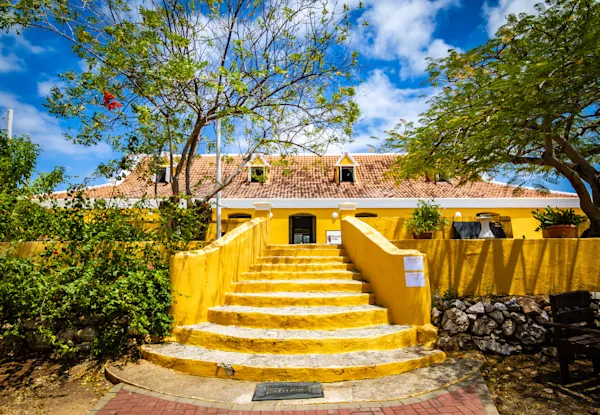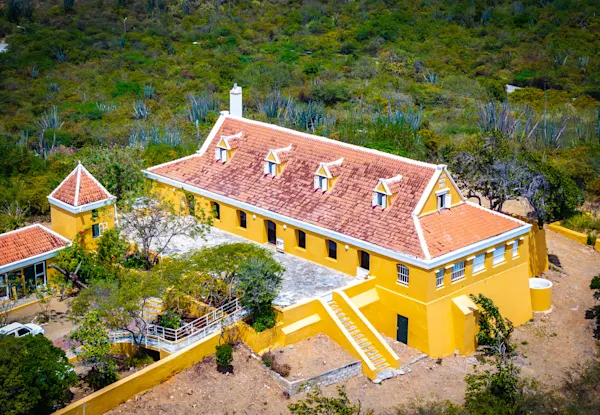


Sights and Landmarks
LANDHUIS KNIP
Land house Kenepa was named after the fruits of the Kenepatree. The country house dates from the beginning of the 18th century. It was once one of the most prosperous plantations on the island. Produce were divi-divi seed-pots and sheepwool. The colonial home is an important monument in the history of Curaçao. It was here that on 17 August 1795 a number of slaves, led by Tula, refused to go to work on this plantation. The revolting slaves went to Santa Cruz and were met by a police force who was called to help.
The growing number of slaves, by then there were over 1000, were overpowered and the leaders were sentenced to death. Tula is still very important even among today's people of Curaçao. In 1875 there were still 175 slavehuts and five stone buildings that housed 390 people. The house was restored in 1985. The home forms a rectangle circuit and the wide galleries on the spacious terraces are meant to keep the house cool. It now supports a museum and antique furniture exhibit. The land house seems to guard the two beautiful beaches of Kleine Knip and Grote Knip.

Weg naar Westpunt
Lagun,







